#Global Defense Initiative
Text
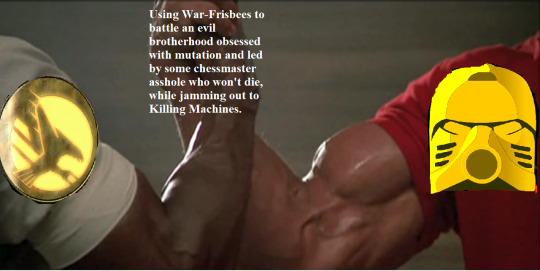
Okay, the Tiberian Sun track was actually called Killing Machine, but close enough
#bionicle#tiberian sun#command and conquer#memes#GDI would fucking kill to get their hands on Matoran disc throwers#imagine spending decades perfecting cyborg technology in order to make mass produced super soldiers#and then it gets immediately hard countered by some robot hobbit who spend the past thousand years learning to throw good#that might actually send Kane into Cardiac Arrest#bionicle memes#command and conquer memes#GDI#Global Defense Initiative
43 notes
·
View notes
Text
It started with both silence and a bang.
Heyo, Tumblr
So, I made this blog primarily to have a place to shove my Space Engineers stuff. My inspirations, plans and what I've made at a given point in time. I'll also occasionally blog about some fandom related things, such as Command & Conquer (the Tiberium timeline specifically), Fallout and some others.
TERFs, racists, nazis, aphobes not welcome.
You can call me Porter for now I guess. '92 born, and I don't really mind what pronouns you use of me.
#first post#Space Engineers#Command & Conquer#Brotherhood of Nod#Global Defense Initiative#Fallout New Vegas#Fallout 3#Fallout 4
2 notes
·
View notes
Text
Gw udah lama gak main CNC3 cuma gw malah tertarik aircraft dari CNC4.
Padahal CNC4 belum pernah main🙃
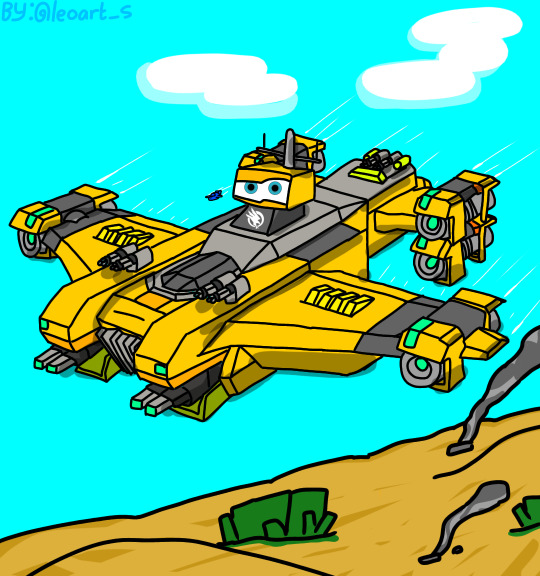
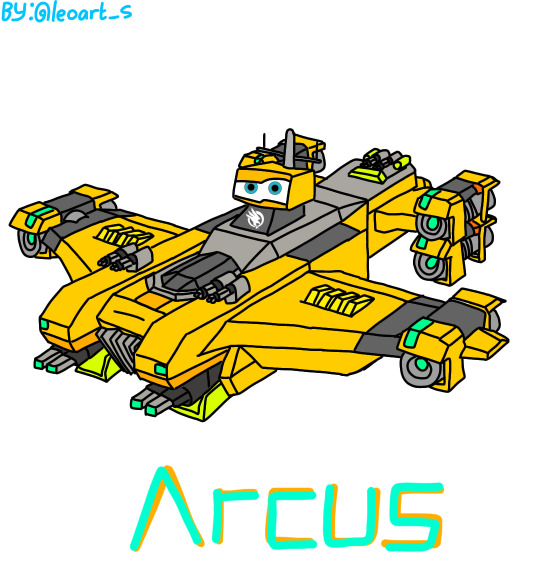

#plane#aircraft#character#karakter#pesawat#art#fanart#gambar#command and conquer#arcus#cnc4#GDI#Global Defense Initiative
1 note
·
View note
Text

SDI - Strategic Defense Initiative, or simply titled SDI and sometimes known as Global Defense, is a 1987 horizontally scrolling shooter produced and released internationally in arcades by Sega. It was later ported to home computers and game consoles, some by other companies. Players control a satellite and must destroy enemies by moving a crosshair over them and firing the satellite's weapons.

Players control a Strategic Defense Initiative satellite orbiting the Earth and must destroy enemy missiles/satellites with its weapons, and when activated the satellite's weapon systems fire at the crosshair present onscreen during play. The arcade version features a joystick to control the satellite and a trackball to control the crosshair. Home computer versions use different control schemes, such as depressing the fire button to control the crosshair, alternating between controlling the satellite and its weapons. It is also possible to use a joystick and mouse in combination to control the satellite and crosshair at the same time, emulating the arcade game's controls.
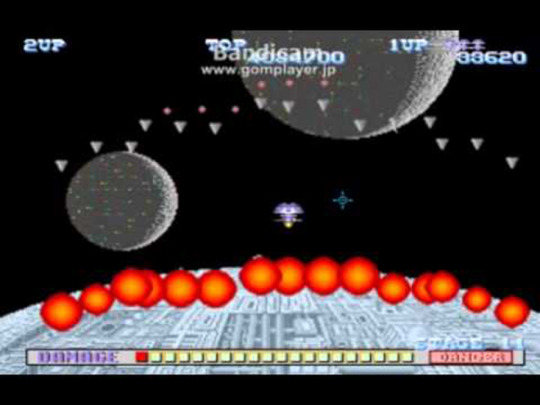
Each stage is split into two sections; offensive mode and defensive mode. During offensive mode the player engages a number of enemies, with the aim of destroying them all without the satellite being destroyed by the enemy. Should the player destroy all enemies during offensive mode, they are awarded 20,000 bonus points and begin the next stage on the offensive. If any enemies evade destruction during offensive mode, the player must complete defensive mode, where they are tasked with protecting the homeland from incoming warheads. Completion of defensive mode advances the player to the next stage, where they go on the offensive again.

This so-called "Star Wars" program was introduced by U.S. President Reagan to promote defensive weaponry that could shoot ICBMs out of space.
1 note
·
View note
Text
Aziraphale and Crowley's unhinged character analyzis (pt1)
Controversial opinion:
Aziraphale and Crowley at the end of Season2 managed to accomplish the main goal they each had since the beginning of time. Only to realize that what they wanted no longer made them happy.
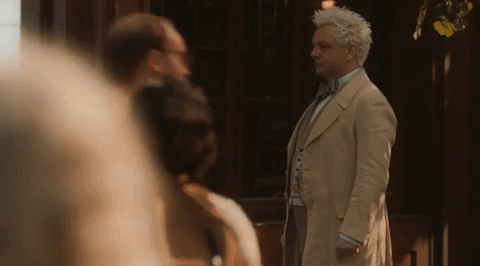
It sounds crazy, but to explain myself I have to do an in-depth analysis of their personalities and the possible transformation arc that both characters are probably going to have at the end of the Good Omens story.
Disclaimer: I have no idea about what is going to happen in Good Omens. This analysis could clearly be considered a theory since I'm not Neil Gaiman, but as someone who knows about narrative and character structure, I'm going to elaborate. Also, English is not my first language, so sorry in advance.
Aziraphale
First let's talk about Aziraphale. For two reasons, firstly because he is the one who seems to deserve the most defense right now; and second because Aziraphale, in my opinion, is the main character of Good Omens. This is because Aziraphale, out of the two, is the one who is likely to have the biggest change in his personality once his arc ends.
In a story, especially one like Good Omens with many characters, it is common for there to be many arcs, as every character has something to learn. Crowley, as a co-protagonist and love interest, is clearly going to have a change at the end of the plot, but his change won't be as big as our angel's.

First things first, what is a transformation arc?
It is the transformation that a character undergoes from the beginning to the end of the story. Basically, at the beginning of a story, a character is in a certain state of equilibrium, he lives and thinks in a certain way until he is exposed to a situation that forces him to act outside of his comfort zone. During this, he will undergo different changes that will be reflected in actions that take him away from his natural state until the climax, where the character will make a decision that will change his normality forever. This is important. In every story, the climax marks a before and after in the protagonist's life: whatever he decides at this moment has no turning back and will mark his life forever, so that after the climax, the character may again have a state of equilibrium but different from the initial one.
What is the climax of Good Omens? Well, in the 1st season we have the bodie swap and in the second season the separation of Crowley and Aziraphale. But of the story itself? It's still a mystery.
Neil Gaiman has already confirmed that Good Omens is a three-act story, so its climax will be located at the end of season 3. We still don't know what definitive change there will be in our characters… although throughout the series we have enough clues to at least know what they probably have to work on changing.
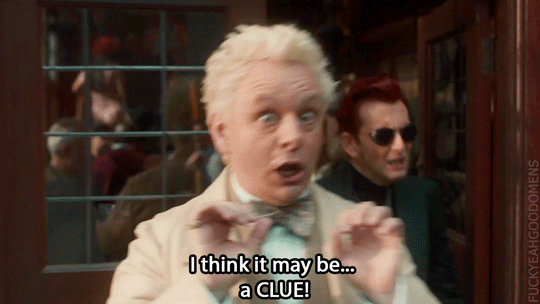
Aziraphale's Role
In order to analyze Aziraphale we must begin by understanding his role within the angelic hierarchy. Aziraphale was created as a Cherub and then, after Eden, became a Principality. Both ranks have one thing in common: they are guardian roles.
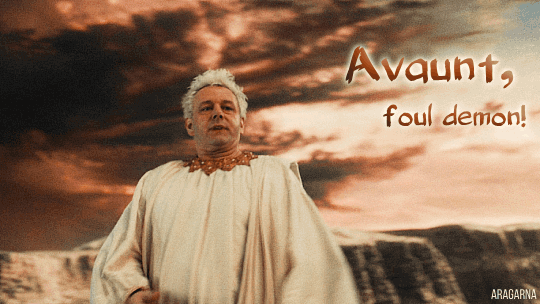
Cherubs are second in the highest circle of heaven, below Seraphims. They are described as "guardians of the universe from a divine plane and without direct contact with humans, although they positively influence them".
On the other hand, Principalities are seventh within the last circle of the angelic hierarchy, and the highest rank within it. They are the guardians of nations and countries, overseeing global events within politics and commerce.
So, Aziraphale was created with the main purpose of being only one thing: a soldier. His function is to obey and protect objects, places and beings. That is why he was the angel who received the sword of fire, his task was to protect Eden.
But he also has a very strong sense of intrinsic goodness that has led him to make erratic decisions throughout history that question just how much he is willing to obey orders.

If Aziraphale feels that something is wrong, he won't do it. It doesn't matter if he has to go against Heaven or sin. It doesn't matter if killing a child saves the rest of the world, he won't do it. It doesn't matter if God will grant Job new children, he can't stand idly by. These actions make him stand out from the rest. A simple soldier just obeys while Aziraphale has a critical mind, he has too strong of an opinion about right and wrong. If an event happens that he considers evil, Aziraphale will go to great lengths to prevent it.
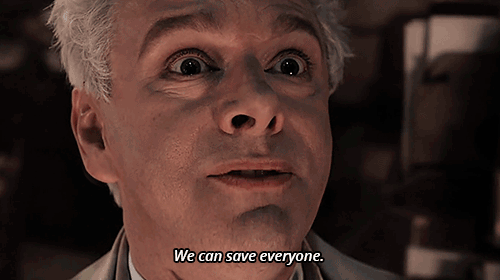
It is remarkable that the first thing he did having free will was to give his sword to Adam and Eve. Of course he did it with the function of protecting them but, by giving them his only weapon, Aziraphale was left in a serious state of vulnerability. He did it because he is good and kind, but it could also be considered an act of sacrifice. Here enters another important issue when talking about Aziraphale that relates to religion itself.
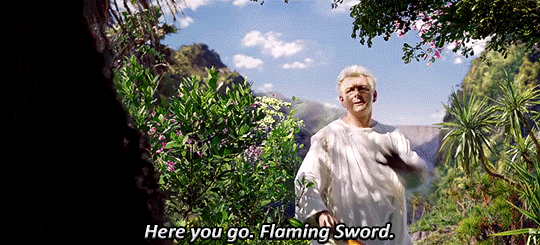
The Martyr Hero
One of the most basic conceptions about the Christianity is that without sacrifice a person cannot really be good.
Jesus was crucified to free us from our sins; Job sacrificed his whole life to prove that his faith was genuine. Even centuries later, the ecclesiastical institution maintains that the more you suffer, the poorer you are, the more chances you have of ending up in Heaven.
All the sacrifices made in life will eventually be rewarded in the Kingdom of God. It is the eternal figure of the martyr that is worshipped in Church, the idea that to really love, to really do good, sacrifices must be made.

Aziraphale believes this blindly. Now, he is an angel, not a human. He will not have an eventual reward of any kind, and that does not matter to him, because he considers himself lucky to be able to be a being of light who brings happiness to others no matter the price he has to pay. He was willing to fall only to save the lives of Job's children just because it was the right thing to do.

Performing actions for your own happiness without thinking of the consequences is frowned upon throughout the Bible. It is considered selfish and is a great source of guilt for all its faithful.
There is a line from the Good Omens Musical that has always stayed with me. When they argue, Crowley tries to talk some sense into Aziraphale by claiming all the reasons why he should help him avoid Armageddon, to which Aziraphale replies "you and I are not important."

Why didn't Aziraphale quickly give in to the proposal to stop the end of the world? Why didn't he tell Crowley where the Antichrist was without hesitation? Why did he help Gabriel in spite of everything? Why didn't he kiss Crowley back although he wanted to?
Truth be told, Aziraphale does not prioritize his own happiness because he does not consider himself important.
At the center of it all is God, good and ineffable who would never let anything happen unless it is not amenable to the greater good, then there is all the rest. Aziraphale believes he is just a soldier with a mission: to protect the Earth and everything he considers worth saving. He is not on this list: his welfare does not matter to him because, in the grand order of things, Aziraphale does not believe he is important.
There is no afterlife reward for him, though that doesn't stop him from feeling guilty about wanting it.
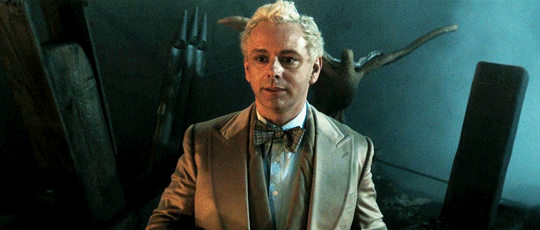
Aziraphale's dilemma
Aziraphale's great dilemma ould be summed up as:
Do I do what I want or do I do what I must?
Should he obey the rules or get what his heart yearns for now that it is within his grasp?

Throughout Good Omens, we learn Aziraphale has given into various temptations such as food. But these sins are small in comparison to what he really wants. For how does he explain to God that what his heart desires the most is to be able to love the Serpent of Eden?
He is madly in love with Crowley. He could lose everything: his bookstore, restaurants, music, art, but the feelings he has for him will never go away. It were years of repression, believing that if he loved him in silence, everything would be okay.
Now, in the season finale, Crowley expresses it, confesses and kisses him, offering him what he has always secretly wanted on a silver platter.

But Aziraphale was also offered a place in Heaven, finally being accepted by the family he misses. Aziraphale spent the entire 2nd season getting involved in trying to save Gabriel, in bringing Maggie and Nina together, getting perhaps a little too invested because he clearly missed having a purpose.

He was not well emotionally. He missed feeling that he does good because, despite everything, he believes in the potential that Heaven has. Aziraphale knows that if he is in charge, if he gives up everything that makes him happy, if he stops being selfish as he was all these years, he can make the necessary change to prevent the End of the World.
Aziraphale is a soldier whose main goal has always been to protect. Becoming the supreme Archangel he is able to protect everyone he loves. Because of this, he decides to sacrifice his earthly happiness and make the most difficult decision but the one he feels is right: to leave Earth, reject Crowley and become Head of Heaven.

The end of his arc and Crowley
Like any arc, Aziraphale's is clearly at the end of the story. He's already changed a lot, and he's done mostly so because of Crowley. Not just because of love, no, Crowley manages to awake something in him. Crowley is the driving force that encourages change in him, that reaffirms or questions his beliefs whenever he is in doubt about whether something is right or wrong. He inspires something that Aziraphale, an obedient soldier of the Lord never had: freedom.
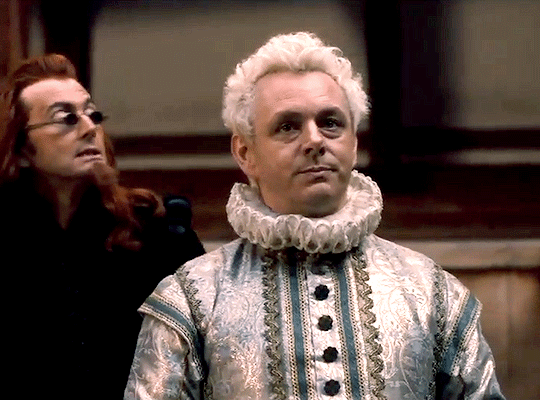
Obviously, our angel always had that spark of freedom, though repressed, hidden in the darkest part of his being because he knows it is something that makes him different from the rest and he doesn't like to admit that he doesn't fit in Heaven.
Because this means that he doesn't fit in Hell either, nor on Earth completely. Ergo, admitting to being different means confirming his suspicion that he doesn't fit in anywhere. But he never had to pretend this with Crowley.

Knowing all this, how will Aziraphale's arc end?
Well, he's going to have to choose between heart and duty again. Aziraphale is going to want to save Earth at the Second Coming, that's obvious. He is going to be forced to disobey Heaven once again as he realizes that he cannot change them. In this way, he will confirm something tragic: his sacrifice was in vain.
But it is necessary that he can assume this in order to understand that he is wrong:
It is not necessary to suffer in order to deserve love.
It is not necessary to sacrifice everything that makes you happy to prove you are good.
Eternal sacrifice is not the solution. Aziraphale has to learn that being happy and being loved is not a reward that has to be given, no, it is something he is worthy of without the need to sacrifice his life.
Aziraphale must understand that he does not have to prove that he is a good person by martyrdom. He is a good person because he is empathetic, smart and sweet.

The secret is to find the balance between love and duty, between good and evil, to embrace his freedom and find happiness by accepting his mistakes that make him different from the rest.
The easiest way is to learn to love in the most genuine way: the human way. Discovering that love does not necessarily have to be painful or repressed, that he can do it openly, that what he feels is not a test of faith, but the reward he has been waiting for all these years.
Aziraphale will ultimately become free through Crowley's love.

#stay tuned for crowley's analysis#some day i'll get over these two#but that day is not today#good omens#aziraphale#aziracrow#aziraphale and crowley#ineffable husbands#neil gaiman#character analysis#terry pratchett#crowley#good omens aziraphale#martyrs#transformation arc#good omens theory#amazon prime#give me s3 or give me death
620 notes
·
View notes
Text
Some of Joe Biden’s accomplishments:
**Domestic policy**
* **American Rescue Plan (2021)**: Provided $1.9 trillion in COVID-19 relief, including direct payments, enhanced unemployment benefits, and funding for vaccines and testing.
* **Infrastructure Investment and Jobs Act (2021)**: Allocated $1.2 trillion for infrastructure projects, including roads, bridges, broadband, and clean energy initiatives.
* **Bipartisan Safer Communities Act (2022)**: Expanded background checks for gun purchases and provided funding for mental health services.
* **Child Tax Credit Expansion (2021-2022)**: Temporarily expanded the Child Tax Credit to provide up to $3,600 per child in monthly payments.
* **Affordable Care Act Expansion (2021)**: Made health insurance more affordable for low- and middle-income Americans by reducing premiums and expanding subsidies.
**Foreign Policy**
* **Withdrawal from Afghanistan (2021)**: Ended the 20-year war in Afghanistan.
* **Re-joining the Paris Agreement (2021)**: Re-committed the United States to global efforts to address climate change.
* **Strengthening Alliances with NATO and the EU (2021-present)**: Repaired relationships with key European allies after strained relations during the Trump administration.
* **Supporting Ukraine in the Ukraine-Russia War (2022-present)**: Provided military, humanitarian, and diplomatic support to Ukraine in its defense against Russia's invasion.
* **Nuclear Deal with Iran (2023)**: Revived negotiations with Iran on a comprehensive nuclear deal, aimed at preventing Iran from developing nuclear weapons.
**Other Notable Accomplishments**
* **Appointing Ketanji Brown Jackson to the Supreme Court (2022)**: Made history by being the first Black woman appointed to the nation's highest court.
* **Signing the Respect for Marriage Act (2022)**: Ensured federal recognition of same-sex and interracial marriages.
* **Establishing the Office of the National Cyber Director (2021)**: Coordinated federal efforts to combat cybersecurity threats.
* **Creating the COVID-19 National Preparedness Plan (2021)**: Developed a comprehensive strategy to respond to future pandemics.
* **Launching the Cancer Moonshot (2022)**: Re-energized the government's efforts to find a cure for cancer.
170 notes
·
View notes
Text
The United States has announced the launch of a multinational force to protect trade in the Red Sea after attacks by Yemen’s Houthi rebels forced at least a dozen shipping lines to suspend operations.
US Defense Secretary Lloyd Austin said on Monday that Bahrain, Canada, France, Italy, the Seychelles and the United Kingdom would be among the countries joining the 10-nation “multinational security initiative”.[...]
Mohammed al-Bukhaiti, a senior Houthi official and spokesperson, told Al Jazeera on Monday that the group would confront any US-led coalition in the Red Sea.
The coalition might also include Egypt and Jordan as additional Arab nations to Bahrain, as they have a vested interest in ensuring the safe passage of ships, said Al Jazeera’s Sara Khairat, reporting from occupied East Jerusalem[...]
19 Dec 23
“Reading between the lines, it’s a very difficult situation for some of these Middle Eastern countries. You have Saudi Arabia, which is very close, it seems, to signing a deal with the Houthi rebels in Yemen,” she added.
“You have Egypt, which doesn’t want to be seen as going against the Houthis’ message on Gaza – which is for Israel to stop the war on the enclave.”[...]
At least 12 shipping companies, including the Italian-Swiss giant Mediterranean Shipping Company, France’s CMA CGM and Denmark’s AP Moller-Maersk, have suspended transit through the Red Sea due to safety concerns.
UK oil giant BP on Monday became the latest firm to announce it would avoid the waters.[...]
Houthi attacks have effectively rerouted a significant portion of global trade by forcing freight companies to sail around Africa, imposing higher costs and delays for energy, food and consumer goods deliveries.
About 12 percent of global trade passes through the Red Sea, which connects to the Mediterranean Sea via the Suez Canal, including 30 percent of container traffic.
82 notes
·
View notes
Text
Healthy Boss Template (CR +3)
Wait, why did a giant health bar just appear in the sky?

Artwork by Jeff_Chee_471 on Reddit.
D&D and Pathfinder have a really unusual idea of what a "boss" is compared to, like, any video game ever made. They often tend to just take an enemy that would be part of a group of normal enemies if you were about six levels higher. When they do something more unique, it still tends to be balanced like that. Tons of offense, not that many hit points, but often extremely hard to hit. Adventure designers often try to make up for this design by making a boss weaker but giving it minions, but that doesn't change the fact that there's really no concept of a creature that's inherently a "boss creature" in this game.
And sometimes that's fine. But sometimes you just want a big chunky fight that's balanced more like how a video game boss is balanced: only a little more damage than other creatures, but way more health, and the ability to recover if you do nasty stuff like stun it. Something that lets the players go all-out using their abilities, and rewards them for doing so, instead of having to spend most of the fight just focusing on not getting attacked, because they know one attack can take them out.
This template isn't a global solution. It'll get old, and if you reuse it too much, players will find strategies that bypass it. That's why I design so many different boss monsters that each work differently. But if you want to convert an existing monster into a boss, this is one way to do so without a lot of effort, and without just giving it the advanced template and several fighter levels to max out its offense.
Some of the options for different abilities are there to deal with different kinds of player strategies, rather than because they're appropriate for different kinds of bosses. If your PCs use vital strike, give it vital negation. If they use combat maneuvers, give it reset stance. If they cast a bunch of spells on the terrain, give it undo. If they rely on hungry pit, give it escape to nowhere. Don't feel bad about using this template specifically to counter them, since the inflated HP and the limited uses of these special abilities mean that the players' strategies will still be useful, they just won't instantly win the fight.
Healthy Boss
Healthy boss is an inherited template that can be applied to any creature.
Challenge Rating: Same as the base creature + 3.
Hit Points: A healthy boss's hit points are three times as high as the base creature's.
Initiative: A healthy boss gains a +10 bonus to its initiative.
Defensive Abilities: A healthy boss can never be surprised, and is not considered flat-footed before it has acted in combat.
Special Abilities: A healthy boss gains 1 of the following special abilities:
Bolstering Cry (Ex)
Twice per day as a move action, a healthy boss can grant all allies within 60 ft. a number of temporary hit points equal to its new challenge rating. When it does so, it also suppresses the following conditions on affected allies other than itself for 1 round: blinded, confused, entangled, fatigued, exhausted, nauseated, paralyzed, shaken, sickened, staggered, stunned. The healthy boss does not need line of effect to these allies, but they must be able to either see or hear it.
Second Wind (Ex)
Five times per day as a free action at the start of its turn, a healthy boss can gain a number of temporary hit points equal to its new challenge rating. These temporary hit points last for 10 minutes. It can only use this ability only once per round.
Vital Negation (Ex)
Once per round, a healthy boss can halve the damage of a single incoming source of damage. It can choose to use this ability after hearing the amount of damage that it would take. This does not require an action.
Additionally, a healthy boss gains 2 of the following other special abilities:
Aura of Recovery (Su)
The healthy boss gains a 40-ft. aura. At the end of each of the healthy boss's turns, one of the healthy boss's allies within this aura (including itself) gains a new saving throw against any one ongoing harmful effect that initially allowed for a saving throw.
Escape to Nowhere (Su)
Once per day, at the end of an enemy's turn, a healthy boss can escape to the ethereal plane, as if using ethereal jaunt. This does not require an action. It remains in the ethereal plane during its next turn. At the start of its second turn after using this ability, the healthy boss returns to the plane it was on, but is staggered during that turn.
Legendary Resistance (Ex)
Once per day, when a healthy boss fails a saving throw, or when an enemy succeeds on a check against the healthy boss's spell resistance, the healthy boss can expend its legendary resistance to treat the roll as if the healthy boss had succeeded on the saving throw or the enemy had failed on the check against spell resistance. A healthy boss with a total challenge rating of at least 9 gains a second use of Legendary Resistance per day, and a healthy boss with a total challenge rating of at least 18 gains a third use of legendary resistance per day. This does not require an action.
Reset Concentration (Ex)
Once per day, when a healthy boss fails a concentration check, it can steel its mind against future distractions, gaining a +10 bonus on concentration checks for the next 10 minutes. This does not require an action.
Reset Stance (Ex)
Once per day, when a healthy boss starts its turn prone or grappled, at the start of its next turn after being successfully subjected to a combat maneuver other than trip or grapple, it can spend a move action to stand up, free itself from any grapples, pick up a single item within its reach, end the effect of a dirty trick maneuver, and move up to its move speed without provoking attacks of opportunity. Upon using this ability, the healthy boss also gains a +5 bonus to its CMD and a +10 bonus to Acrobatics, Climb, Ride, Swim, and Fly checks for the next 10 minutes.
Undo (Su)
As a standard action, once every 3 rounds, a healthy boss can revert the effects of any number of ongoing or instantaneous magic spells that are affecting itself, other creatures, or the surrounding environment. Each spell effect it attempts to undo must be within 60 ft. of the healthy boss, and must have been applied during the last 10 minutes. Even instantaneous spells can be reverted with Undo, but damage is not reverted.
To attempt to undo a spell, a healthy boss makes a caster level check against a DC of 6 + the effect's caster level, using its hit dice as its caster level. If successful, the ongoing spell ends, or the effects of the instantaneous spell are reverted.
56 notes
·
View notes
Text
Dispatch from the Palestinian Youth Movement
“The foremost demand to anyone inside the West, inside the imperial core, is to oppose the genocidal drumbeat waged by Zionist and Western leaders alike. The Palestinian people of Gaza have asked for the bombing campaign to stop, the blockade to end once and for all, and for humanitarian aid to enter. But also and more broadly, what we are asking those who wish to be in solidarity within the West is threefold. First, struggle through organizations and your workplaces and your communities and in the streets to demand an end to both the current genocidal campaign and for an end to the entire system of settler colonialism that has strangled Palestine for the last century. Second, go on the offensive: demand sanctions against Zionism; no more weapons, no more money, no more cultural or institutional cover. We want the total anti-normalization of a Zionism that has once again shown its face to the world. Finally, understand Palestinian resistance as fundamentally just and as a means of survival for our people; it will not stop in the weeks and months to come, and you must be prepared not to waver again.
The Western governmental response has been military and economic carte blanche and material support. These nations have withdrawn much of their foreign aid to the Palestinian people at a moment of utter crisis; leaked documents suggest that the US State Department has instructed its bureaucrats to avoid issuing calls for de-escalation or ceasefire. Secretary Blinken visiting the Philadelphia-born prime minister of the Zionist entity while he is initiating genocide of Palestinians is an affirmation of total US government support and a guarantee of intelligence and military resources to be placed at the Zionists’ disposal. EU leaders, too, have embraced the death merchants of the “Second Nakba” in a lurid display of global settler phantasmagoria. Students and activists are being rounded up from the streets and campuses for their brave defenses of the Palestinian resistance. Germany is leading mass arrest campaigns and seeking to ban the Palestinian prisoners’ movement from their country; England and France are seeking to ban symbols and expressions of Palestinian solidarity. Your voices and your bodies are needed now.”
56 notes
·
View notes
Text
The ripping down of hostage posters, denial of there being hostages, and saying that the hostages were treated well (they weren't) all play a role in further dehumanization of Jews/Israelis.
This also is a major factor of Oct 7th denial in general, but for this post I'll focus more on the hostages.
By saying that there are no hostages or that the hostages are being treated well, antisemites are trying to paint Israel's actions as violence for the sake of violence. And of course, perception of Israel gets spread to Jews globally. (Why? Antisemitism.)
So by successfully manipulating the narrative about Israel to spread what is essentially blood libel, the portrayal of Jews as inherently bloodthirsty and violent, they are able to dehumanize us into bloodthirsty monsters who kill to kill.
While of course it is important to maintain the humanity of the hostages in dialogue for the sake of the hostages, I think it's also important to recognize the importance of this rhetoric to all of us on a personal scale.
The reasonable waging of war requires three elements: motivation, justification, and military capacity.
That is to say, a country without motivation wouldn't wage war because it does not want to, a country without justification could wage war technically but would be deeply looked down upon and condemned much more than a country with justification, and the military capacity is fairly self-explanatory.
Hamas had motivation (killing Jews) and some military capacity, and their "justification" (quotes because what they did is not and cannot be justified) was killing "Zionists". The world seemingly agrees that their justification is valid, which is highly concerning but I'd rather address that in a different post.
Israel's motivation is self-defense. It's the basic need to keep Israelis safe. Israel obviously has military capacity. And Hamas gave Israel justification with their attack and hostage-taking, as self-defense is among the strongest motivators and justifications.
(From how I've discussed the three factors of war in the past these are more so meant to be applied to the initiating side, but bear with me.)
The narrative around Oct 7th right now is one of denial and minimization. By claiming that it wasn't that bad or that it didn't happen, the media is trying to strip Israel of the justification.
See, a country can wage war without justification on a practical level, but it will face many issues from the international community for doing so. Except with Israel, seeing as it's the only Jewish state in the world, any criticism of Israel on the state-level (actual valid government critiques are different) tend to affect Jews globally.
Trying to strip away Israel's valid justification makes Israel falsely appear baselessly violent, aggressive, and bloodthirsty. By extension, the world begins to view Jews in the same way. This whole rhetoric leads to the dehumanization of Jews and Israelis.
So yeah, that's why we're mad about antisemites tearing down the posters and denying/justifying Oct 7th.
Because by doing so, you're dehumanizing us.
#jumblr#jewish#judaism#jew#proud israeli#israel solidarity#opinion#discourse#antisemitism#antizionism is antisemitism#antizionism#proud jew#proudly jewish#proud zionist
32 notes
·
View notes
Text
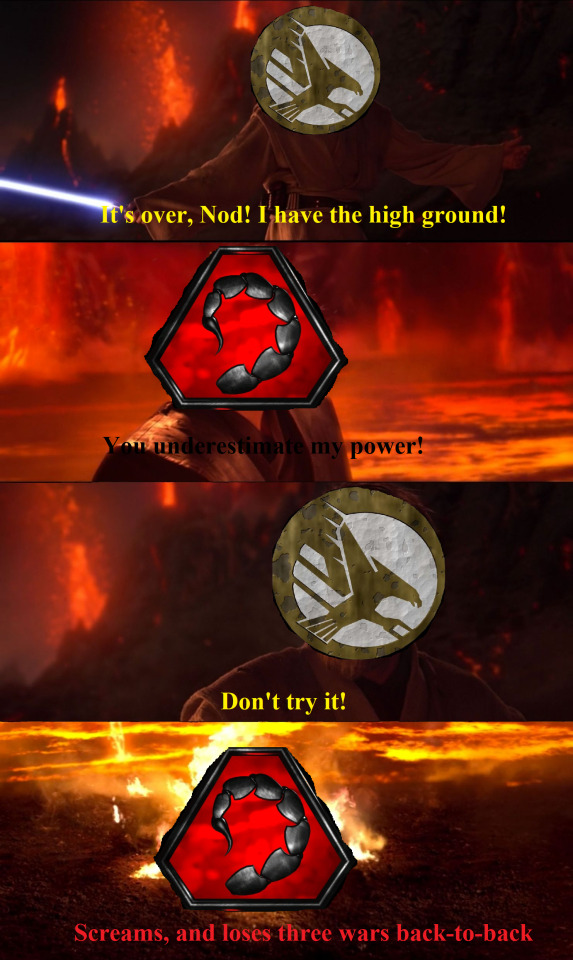
#Command and Conquer#Command and Conquer meme#meme#shitpost#GDI#Global Defense Initiative#Brotherhood of Nod#Nod#Kane Lives In Death#Tiberium#Command and Conquer Tiberium timeline#yes I know that white text on a black background is easier to read#I made this in Paint#and it doesn't have an option for that#if it does#please direct me to it#The highest ground is orbit
20 notes
·
View notes
Text
Hamas’s Oct. 7 attack on Israel has initiated an unpredictable chain of events, and it is too early to determine how the attack might shape the future course of the struggle for Palestinian liberation. The vast destruction of the Gaza Strip and the horrifying loss of civilian life are a painful blow to Palestinians, reminiscent of the Nakba of 1948. Yet, simultaneously, the illusion that the Palestinian question can be swept aside while Israeli apartheid persists has been shattered, and Palestine is back at the top of the global agenda—with growing recognition that it must be addressed, even if the brutal massacres of Oct. 7 have polarized the debate around it.
Since 2007, Hamas’s presence in the occupied territories has been restricted to the Gaza Strip, where the movement has been effectively contained through the use of a hermetic blockade that collectively imprisoned Gaza’s 2.3 million Palestinians. In its containment, Hamas was stuck in what I have termed a “violent equilibrium,” whereby military force emerged as a means for negotiating concessions between Hamas and Israel. The former uses missiles and other tactics to compel Israel to ease restrictions on the blockade, while the latter responds with overwhelming force to build deterrence and secure “calm” in the areas around the Gaza Strip. Through this violence, both entities operated within a framework whereby Hamas could maintain its role as a governing authority in Gaza even under a blockade that enacts daily structural violence against Palestinians.
Beginning in 2018, Hamas began experimenting with different means of changing this equilibrium. One was through its decision to allow for popular protests against Israel’s domination to take place. The Great March of Return in 2018 was one of the most extensive examples of Palestinian popular mobilization. The protest emerged as a civil society-led effort that was given permission, supported, and ultimately managed by a committee comprising the various political parties in Gaza, including Hamas. As a governing authority, Hamas provided much of the infrastructure necessary for the mobilization, such as buses to transport activists. This was a stark departure from the means with which Hamas traditionally challenged the blockade.
Another shift in the equilibrium came a few years later, in 2021, when Hamas leveraged its military arsenal to retaliate against Israeli aggression in Jerusalem. In the lead-up to Hamas’s rocket fire, Israel had been actively working to expel families in the Sheikh Jarrah neighborhood from their homes to make room for Jewish settlers. This initiated widespread mobilization of Palestinians across the land of historic Palestine. The Israeli state responded with force and mass arrests against protests that were peaceful and included prayers around Al-Aqsa Mosque. Israel’s efforts to disrupt the protests and push forward with its colonization of East Jerusalem triggered Hamas to respond with rocket fire.
These examples demonstrate efforts by Hamas to go on the offensive and expand its resistance to encompass demands that extend beyond the lifting of the blockade. Such positioning implies an objective to act as a military power that comes to the defense of Palestinians against Israeli colonial violence beyond the Gaza Strip. Underpinning these tactics was a clear strategic shift by the movement to transition away from acquiescence to its containment to a more explicit challenge of Israeli domination—and thereby overturn the equilibrium that had become entrenched over the course of 16 years.
This shift is in keeping with Hamas’s historical evolution as a movement that has relied on both armed and unarmed resistance, in ebbs and flows, to challenge Israel’s occupation and to push for core demands of the Palestinian struggle, including the right of return, which was central in the 2018 protests. (Hamas’s history is replete with examples in which it read the political context around it and, on the level of the movement’s leadership, altered the strategic direction of the organization, with clear instructions for the military wing to either escalate or de-escalate.)
The recent shift to all-out violence is also in keeping with the movement’s understanding of the role of armed resistance as a negotiating tactic—one that the movement has historically relied on to force concessions from Israel.
The Oct. 7 attack can be seen as the next logical step for a movement chafing against its containment. Some analysts have described Hamas’s move as suicidal, given Israel’s reaction, or irresponsible, given the death toll it has led to among Palestinians. Whether or not either of these characterizations is accurate depends on an analysis of what options Hamas had and on how the dust settles. There is no doubt, however, that the attack itself was a decisive rupture—one that is, in retrospect, clearly the culmination of all the changes that the movement had been experimenting with.
The strategic shift entailed moving from the limited use of rocket fire to negotiate with Israel into a full-throttled military offensive aimed at disrupting its containment, specifically, and the Israeli assumption that it could maintain an apartheid system with impunity.
There is little doubt that the bloody Oct. 7 attack exceeded Hamas’s expectations and that the scale of the massacres in Israel has galvanized Israeli and international opinion in ways that Hamas may not have entirely anticipated. Any significant military operation that Hamas conducted with any degree of success—targeting military bases near the Gaza-Israel fence area and securing a significant number of Israeli combatants—would have similarly shattered the paradigm of the blockade and elicited a devastating Israeli response.
Yet the killing of civilians on this scale—whether or not Hamas’s leadership had actively pushed and prepared for this level of bloodshed—has galvanized a ferocious Israeli response in Gaza, enabled by the carte blanche granted to the Israeli government by most Western leaders. Some scholars of genocide have argued that the Israeli campaign amounts to ethnic cleansing and intent to commit genocide.
It is counterfactual to argue whether or not these responses would have taken place had no civilians been killed or kidnapped. Either way, Hamas’s military offensive and the mass violence that followed have irreversibly shaped the nature of the response against Palestinians in Gaza.
From a strictly military-strategic perspective, prior to the attack the only option other than the use of force available to Hamas was to remain constricted within the framework of the blockade, while Israeli settlers expanded their rampaging violence in the West Bank, Israeli politicians disrupted the status quo around Jerusalem’s Haram al-Sharif/Temple Mount complex, and Israel got rewarded with U.S. visa waiver programs and regional normalization agreements.
Within this climate, the options Hamas had were to acquiesce to the continued assumption that Palestinians had been effectively defeated and to remain confined and strangulated within their various Bantustans—parcels of discontiguous land resembling the apartheid-era South African “homelands” of the same name, where many disenfranchised urban Black people were relocated and governed by supposedly independent local puppet regimes while a white supremacist government continued to exert military control.
The choice, as Hamas saw it, was between dying a slow death—as many in Gaza say—and fundamentally disrupting the entire equation.
It is certainly the case that cornering Hamas—and Palestinians more broadly—into a situation whereby only a powerful military attack of this form emerges as the preferred option for the movement could have been avoided. Even prior to Hamas’s containment, and specifically since the Second Intifada, there were many opportunities for diplomatic and political engagement with it.
Hamas had de facto acquiesced between 2005 and 2007 to a political program that may, if leveraged correctly, have led to the creation of a Palestinian state alongside Israel and the dismantling of the occupation. This was a position that the movement put forward as part of its election victory in 2006 and subsequent entry into the Palestinian Authority. Later, this position was formalized in 2017 in the movement’s amended charter, which called for the creation of a Palestinian state on the 1967 line, without offering formal recognition to the state of Israel.
The Israeli and American refusal to engage with any of the movement’s political concessions since then, while Israel was consistently given a free pass to maintain its violent occupation and ongoing colonization of Palestinian land, undermined any faith Hamas may have harbored regarding the international community’s interest in holding Israel to account or enabling Palestinians to establish a state on a portion of historic Palestine.
Much has been written on the lost opportunities of dealing with Hamas diplomatically. The events that followed the movement’s democratic election in 2006 were premised on a refusal to engage with Hamas’s political platform, with Israel and the U.S. government preferring to pursue regime change and to deal with Hamas militarily, choosing to limit their engagement on the Palestinian file with the PA.
Since then, Israel has supported and enabled Hamas to exist as a governing authority while simultaneously demonizing the movement as a terrorist organization, a paradox that enabled the state to justify the collective punishment inherent in the blockade of the Gaza Strip. This was explicitly the chosen strategy of successive governments under Benjamin Netanyahu, who openly spoke about the benefits to Israel of pursuing a “separation policy” between the West Bank and the Gaza Strip as a means of undermining prospects for Palestinian statehood.
In the absence of any real diplomatic prospects for Hamas, its choices were either slow strangulation as the governing authority of the Gaza Strip, while Israel became ingratiated with Arab regimes that had all but abandoned the Palestinian cause, or a decisive blow that could fundamentally disrupt the assumption that Palestinians were defeated and subservient and that Israel could maintain its apartheid regime cost-free.
That Hamas opted for the latter suggests that it is behaving strategically and remains committed to the belief that it is playing a long game. By this logic, even if Hamas’s military wing were entirely destroyed or expelled, the movement has already secured a victory in revealing the weakness and fragility of Israel’s military, which can be exploited in the future through a reconstituted Hamas or through another future military formation equally committed to armed resistance as a means of liberation. In other words, the disruption itself becomes a space for alternative possibilities to emerge, whereas, prior to that, there was only the calcified certainty of continued Palestinian oppression.
This belief in a long game means that regardless of what happens in the short- to medium-term future, even with the horrifying loss of civilian life in Gaza, Hamas has disrupted not only the structure of its containment but the entire notion that Palestinians can be siloed into Bantustans and forgotten without Israelis incurring any cost. That disruption is existential for Israel, and, supported by Western allies, the state believes that the only way to survive this blow is through decimating Hamas.
Israel will fail—and is already failing—in attaining that objective. Regardless of how the battles against Hamas in Gaza unfold now, the movement can already claim to have emerged victorious in the long term because it irreversibly shattered the false sense of security Israelis had cloaked themselves in, despite all attempts to present Israel as invincible and impenetrable.
But even in the immediate battle taking place in Gaza now, prospects for an Israeli victory are slim. As in any asymmetric struggle, the guerrilla fighters merely have to not lose to emerge victorious, whereas the powerful state will lose if it does not achieve its overarching goals. And the goal of decimating Hamas as a movement is as vague as it is unachievable. For one thing, the movement is much bigger than its military wing. It is a movement with a vast social infrastructure, connected to many Palestinians who are unaffiliated with either the movement’s political or military platforms.
At its core, Hamas is an Islamist movement that has its roots in the regional branches of the Muslim Brotherhood. It is connected to health care infrastructure and educational facilities and charities. If, by decimating Hamas, Western and Israeli leaders are calling for the killing of any Palestinian who espouses any form of Islamist ideology, then that is nothing less than a genocidal call against the Palestinian people, and it should be understood as such.
If, however, the goal is to destroy the movement’s military infrastructure, then this goal is likely to fail in one key way. The breaking apart of Hamas’s military wing will set the stage for the emergence of other forms of organized resistance—whether within Hamas’s ideological garb or otherwise—that are similarly committed to the use of armed force against Israel.
History has already taught us this much. Hamas emerged in 1987 from the embers of the PLO’s historic concession, whereby throughout the late 1970s and early 1980s the PLO shifted toward conceding on the partition of Palestine by recognizing the state of Israel and renouncing the use of armed resistance in pursuit of a Palestinian state. Coinciding with that transition was the establishment of Hamas as a party that held on to the same principles the PLO had before it, couched in an Islamist ideology instead of the secular nationalist one that dominated the 1960s and 1970s.
There is a continuum of Palestinian political demands that stretch back to 1948 and before. Whether or not Hamas survives in its current incarnation is a red herring: Palestinian resistance against Israeli apartheid, armed and otherwise, will persist as long as the regime of domination continues.
At its core, this is a regime that provides more rights for Jews than Palestinians throughout the land of historic Palestine, stratifying Palestinians into different legal categories and fragmenting them geographically in order to sustain an overarching regime of domination. All the while, it prevents the internationally recognized right of allowing Palestinian refugees to return to their homes.
Israel’s model of apartheid is committed to Jewish supremacy from the river to the sea—a recently maligned phrase that has long been used unapologetically by the Israeli right—while Palestinians remain as a dominated people living within the confines of that state and governed in the occupied territories through illegitimate authorities that are collaborationist in nature with the Israeli state.
To overturn this dynamic, and to undo Israel’s conviction that Hamas—through its containment—could be pacified as the PA had been in the West Bank, the movement took a calculated risk with its operation, given that it realistically expected its military infrastructure would be severely weakened in the anticipated retaliation. But in the absence of any willingness by the international community to engage with Palestinians outside of such armed tactics, and given Israel’s ongoing and increasingly violent colonialism, this shift toward an expansive military operation on Hamas’s part was ultimately inevitable.
There is another reason underpinning Hamas’s calculus, and that is its ambivalence toward governance. Hamas was shackled by its role as a governing authority in the Gaza Strip. When the party ran for elections in 2006, it was with no small degree of organizational conflict about taking on a governing role or even participating in the PA.
Hamas leaders articulated that rather than accepting the limitations of governance under occupation, as Fatah had done through the Oslo Accords, the movement was intent on using its election victory to revolutionize the Palestinian political establishment. It asserted its capacity to do that by noting that, through its response to the Second Intifada, Israel had decimated the Palestinian body politic and rendered both the PA and the Oslo Accords obsolete.
Hamas spoke about the need to build a society of resistance, an economy of resistance, an ideology of resistance, through the very body of the PA—and to use this body as a stepping stone into the PLO, from where it could lead alongside other political factions on setting a vision for the liberation of Palestine, and for representing Palestinians in their entirety, beyond those in the occupied territories.
Its election victory, as I argue in my book, Hamas Contained, was meant to be revolutionary toward, rather than accepting of, the status quo. With no real prospects for statehood, Hamas understood that focus on governance and administration meant beautifying a Bantustan within Israel’s apartheid system, that there would be no real prospect for liberation or sovereignty, and that the only path forward was enhancing quality of life while remaining subservient to the occupation. That is indeed the PA’s model in the West Bank, and it would have been a more extreme version of that in the Gaza Strip.
With the successful Western-backed coup against Hamas—which began shortly after Hamas’s election victory and culminated in a civil war between Hamas and Fatah in 2007—for some time it looked as if the movement’s governance in Gaza had pacified it to the extent that its revolutionary ideals had been lost. The lengthy period of containment suggested that the movement may have become entrapped in its own electoral success and shackled by its governance responsibilities—or, in other words, pacified. The violent attack on Oct. 7 has clearly shown that the movement, rather, had been using this time precisely to revolutionize the political body, as it had always intended to do.
All this still does not mean that Hamas’s strategic shift will be deemed successful in the long run. Hamas’s violent disruption of the status quo might well have provided Israel with an opportunity to carry out another Nakba. This might result in a regional conflagration or deal Palestinians a blow that could take a generation to recover from.
What is certain, however, is that there is no return to what existed before. Yet this is precisely what Israeli, U.S., and other Western leaders and diplomats are preparing for. Already, the discussion has turned to the day after, even in the absence of a cease-fire having been formalized.
All indications point to a U.S.-Israeli decision to try to replicate in the Gaza Strip the successful model—in their view—of Palestinian collaborationist rule that exists in the West Bank. Rather than engaging in a process whereby Palestinians have the opportunity to choose representative leaders who could govern them, Israel and the United States are replaying an age-old approach of choosing compliant leaders who can do their bidding and subdue the Palestinians under Israeli hegemony.
This is being done under the banner of supposedly unifying the Palestinian territories, with both parties conveniently erasing their own complicity in facilitating this disunity until now. The goal for both is not reunification but the pursuit of acquiescent rule: the creation of a governing structure in which a pliant leadership governs civil needs under an overarching structure of Israeli military domination.
Such a goal has to contend with Gaza’s historic reality as a hotbed of resistance to Israeli apartheid, given that the majority of Gaza’s inhabitants are refugees seeking the return to their homes in what is now Israel. To facilitate the installation of an authority chosen by Israel and the United States requires nothing less than razing Gaza and killing its inhabitants—the policy that is now unfolding.
Aside from the moral and legal implications of this are the practical ones. It is difficult to envision any Palestinian leader or governing structure that will take over responsibility for the Gaza Strip after Israel destroys it, as they will be seen as having been ushered there on the backs of Israeli tanks. Such leaders will have even less legitimacy than the PA has in the West Bank today, which is hard to imagine.
Such an approach might buy some time. It might produce the semblance of a status quo and a degree of stabilization. But if any lesson must be garnered from Oct. 7, it is that this will not be lasting or sustainable. Any chosen governing entity will not be able to guarantee security for any Israeli as long as apartheid exists and any Palestinian government installed in Gaza will rightly be seen as illegitimate and collaborationist.
However the “day after” is packaged, it will fail unless it comes with holding Israel accountable and dismantling its regime of apartheid, and it will be clear to all Palestinians that it is just another Bantustan solution, cloaked either as humanitarianism or a renewed commitment to a two-state solution.
In this sense, Hamas has indeed dealt a fatal blow to Israel’s fantasy that it could continue its occupation and blockade indefinitely. It is yet unclear, however, if Israeli political leaders—beyond their vengeful violence—have managed to heed this lesson. But grassroots organizers, Hamas’s allies, and other political and military formations have.
Whatever comes next, and however Hamas’s legacy will be written, it’s clear that it is the movement that burst the delusion that Israel and its allies have held on to for far too long.
27 notes
·
View notes
Text

A Global Defense Initiative Medium Tank from Command & Conquer. From the American contingent; C Company (hence the name on the front of the turret), 69th Armoured Regiment, 3rd Infantry Division. This model features the GDI standard turret layout and rangefinder, markings, and yellow peacekeeper paint job.
A happy reintroduction to the hobby for me. Some mis-steps including having to repaint the GDI icons several times, and a (let's just say) piss-poor yellow drybrush stage. In the end, satisfactory.
37 notes
·
View notes
Text
Superhero Roundtable: Invincible

How do structural mythology, cultural studies, and cultural history reflect the series’ world and world-building around superheroes?
Invincible, much like many modern iterations of the “Capepunk” superhero genre that explores superheroism in a “realistic” manner accompanied by dark comedy and gruesome conflicts, offers commentary and its own unique premise on the cultural studies, cultural history, and structural mythology especially. The structural mythology of the show that initially borrows and parodies the structural mythologies of shows like The Justice League (2001) constantly explores what it means to be a hero through the main character, Mark Grayson. The 17-year-old half-human-half-Viltrumite high school student grapples with not just having to learn how to use his new powers, but also what being a superhero means, a concept that Mark struggles with throughout his entire career. A modest example of this is how Mark dubs his superhero alter-ego as “Invincible”, yet throughout the series, he is constantly beaten to near death and loses many major conflicts. Additionally, his father, otherwise known as Omni-man, someone whom Mark initially looks up to and models his superhero identity and perspective after, reveals to Mark that he comes from an alien race whose purpose is to conquer the universe and nearly kills Mark after Mark’s refusal to join in his father’s conquest. This is one of the most pivotal events in the series, as not only did it result in the death of thousands of people, but also is the beginning of the deconstruction of the illustrious image superheroes held and greatly influenced Mark’s career as a superhero.
youtube
The media of Invincible, which includes both the show and the graphic novel from which the show is adapted, greatly reflects cultural beliefs in their audience, more so in the comics, and adds onto these shaped beliefs. Apart from the show bolstering a wide array of superheroes from many different races and ethnicities, Invincible adds to the cultural view that anyone can wear the mask, a view famously explored through Spider-man media. Superhero monikers in the world of Invincible, primarily in the comics, are interchanged and evolved upon e.g. numerous people taking on variations of Omni-man’s identity and a few characters temporarily and permanently stepping in as Invincible with their own perspectives on what that position means.
The comic run of Invincible spans from 2003 to 2018, meaning there is a large element of cultural history that each major arc of the comic run is influenced by, however, the current run of the show makes some attempt to modernize some of the cultural history elements. One that particularly jumps out is the change in values of broadcasting and information exchange and how that has played a part in the growing caution and distrust for authoritative bodies, namely the U.S. government, among the younger generation. In some scenes in the show, as Mark is starting to develop agency in being a superhero, he has numerous arguments with Cecil Stedman, the government agent in charge of the Global Defense Agency, and even defies orders that Cecil gives him in acts of both rebellion and growth in his own ideologies on ‘superheroing’.
In what ways are the superheroes and their abilities informed by their racial, gender, sexual, and cultural identities?
In many cases, superheroes in Invincible are inspired by already existing superhero entities of both Marvel and DC with a range of alterations, some of which are informed by their racial, gender, sexual, and cultural identities. Both Mark and his father Nolan exhibit powers popularized by DC’s Superman that also similarly stem from their cultural identity as aliens, namely, Viltrumites from the planet Viltrum. Though not explicitly explored in the early stages of Mark’s career, his Asian identity also plays a role in his superhero identity. Many male characters seemingly naturally have some degree of increased physical strength and durability as part of their abilities with very few exceptions like Rex-Splode whose ability is able to create explosions by charging molecules to an unstable level of power. Most female superheroes exhibit abilities that aren’t necessarily akin to physical strength or explosiveness and more so some form of manipulation of matter, with very specific exceptions in characters like Monster Girl who shares similarities to Marvel’s Hulk in that she can transform into a large monster with supernatural strength, durability and healing, and War Woman who bares similarity to DC’s Wonder Woman in numerous ways, including her supernatural strength, speed, and durability
youtube
The show also shamelessly plays into the trope of having black male characters have superstrength and/or supernatural durability, as there are numerous black male characters, both heroes and villains, who have almost the exact same abilities with the exception of characters like Darkwing, the Batman-inspired superhero.
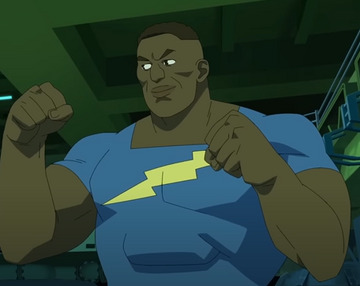
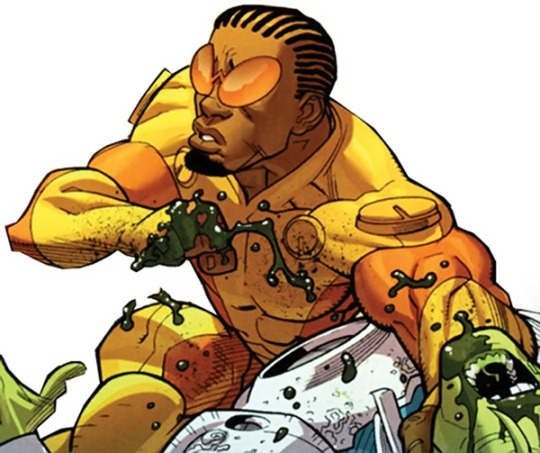

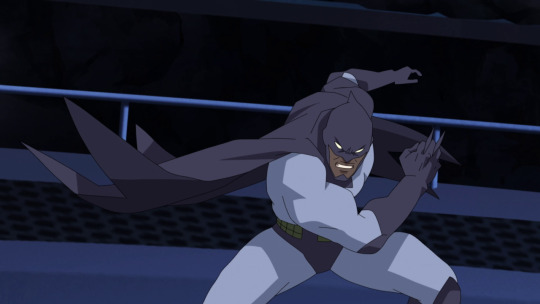
In what ways do costumes and concealing identities further separate the superheroes from normal society? How necessary is it for the superheroes to hide their true identities to successfully achieve their goals?
The show takes some time to explore the process of how superheroes pick their costumes and how they choose to have their identities displayed, such as hiding one of their identities or making attempts to separate them.
A somewhat common trend among some superheroes of the world, usually superheroes who have had experience in the careers or are generally older, is that they don’t wear a mask or any sort of garment that could skewer their identity, which makes a lot of sense for superheroes who don’t have separate identities in their day-to-day lives, but for characters like Omni-man/Nolan Gray and Atom Eve/Samantha Eve Wilkins, one of Mark’s friends and allies, they’re still able to hide and separate their identities without using a mask of some sort. This isn’t quite successful for Eve as Mark is able to recognize her at school after encountering her as her superhero counterpart earlier, and she offers an explanation that most people don’t expect someone they know to be a superhero, a very Hannah Montana situation that mostly works. Mark, however, has a number of reasons as to why he has to wear a mask, especially for the safety of his friends and family, as there are numerous cases in the comics where villains exploit his identity as well as his ties to his Father.
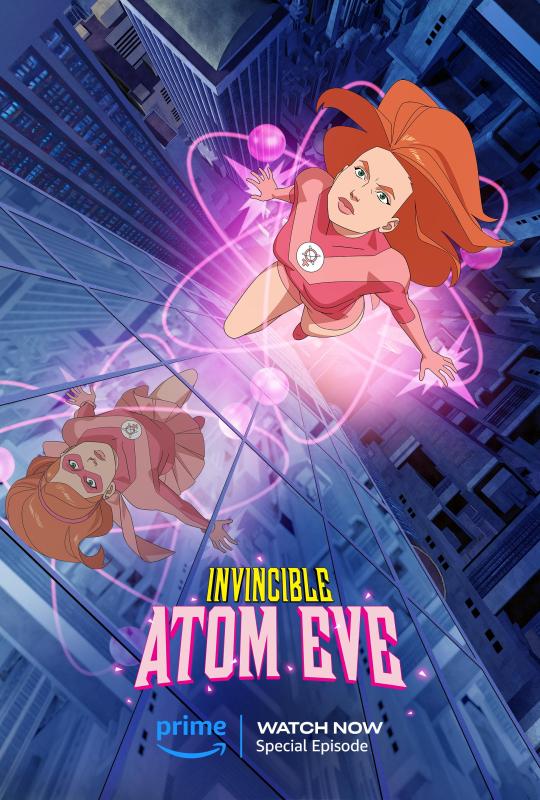
The costume designs also play a part in separating the superheroes from society and are explicitly described as symbols. When he starts, Mark builds his costume with the notable goggles and bandana to hide his identity. He later visits Art Rosenbaum, a suit tailor who designs many of the costumes of the show, and we see him create Invincible’s suit and mask that he dawns for most of his career that helps hide his identity as Mark Grayson (an important detail that will be explored quite soon in the series). When picking a suit design with Art, Mark states that he doesn’t like the orange and yellow suit designs and wants something “more iconic” (hence the yellow ‘I’ in the middle of his suit). This reflects both Mark’s understanding of the superhero identity that is modeled greatly after his father who dawns an ‘iconic’ white and red suit with the letter ‘O’ on it, a symbol, as Omni-man describes it, and the design of other superheroes entities of the time that dawned sleek black lines and colors that accompanied whatever other color scheme the superhero wore.
youtube
How do the economic, political, and social events that occurred during the series’ creation and broadcast cultivate and inform the superheroes’ decisions and actions?
The Invincible comics began its run in 2003, meaning some of the comic elements and stories may have been influenced by the period of time in which there was a heavy focus on the United States combatting terrorism following the events of 9/11, as many “alien threats” dealt with by the superheroes resemble this period. Sam Raimi’s Spider-Man (2002) also came out a year prior and is heralded as a large influence in comic book superheroes, most likely also being an influence in the creation of Invincible as they share very many similar elements (and even have various comic runs where both characters crossover to work alongside each other and are drawn by the same artist).
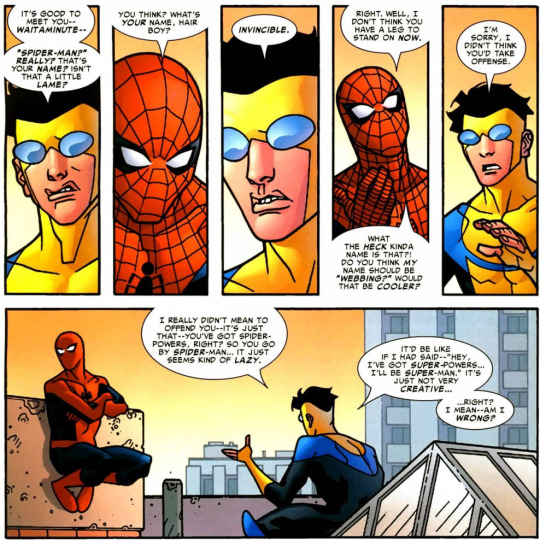
Nonetheless, the T.V. show that’s been broadcasting since 2021 very much attempts to modernize the story, and we see elements of more transparent Government involvement (or rather more exposure into the credibility of the Government) following major events such as Trump’s impeachment. Additionally, in recent years there has been general dialogue and questioning over the State following more and more largely broadcasted and empowering social justice movements and mass protests in recent years (e.g. the Black Lives Matter movement) that have worked to counter a lot of authoritative policies as well as deconstruct prevailing social constructs. In the show, this can be reflected by how Invincible (and several superhero characters) begins to make more of his own decisions instead of simply following orders given to him by Cecil, as well as a general distrust for Government authorities by the general public due to either their reliance on Superheroes and their continuous exploitation of people, both superheroes and non-superheroes.
How do the superheroes question themselves, each other, and their obligations and duties to the people around them?
Mark especially questions his role and obligation as Invincible as his plate grows larger, takes on more responsibilities and constantly has his beliefs toyed with. Growing up with a father as a superhero, being a superhero just like him had been Mark’s dream for 17 years. However, after having his whole world shattered when his father revealed himself to be a world conqueror playing “superhero” and “family man” as a means to accomplish his goal of conquering Earth, killing the most powerful superheroes and thousands of civilians due to Mark refusing to join in the conquest, Mark begins the continuous journey of questioning his role and responsibility as a superhero, often fearing he would turn out like his father and constantly blames himself for the destruction Omni-man/Nolan caused. Even in the second episode, we see Invincible learn the nuances and difficulties of superhero work when he causes the death of an Old lady while trying to evacuate her from an alien invasion.
youtube
youtube
A common theme in the show is the irony of Mark’s superhero name, Invincible, and how he is often going up against threats that are a lot more powerful than him and he repeatedly gets beat up and loses his battles. This takes a toll on Mark, causing him to question his abilities more often than not, as well as those close to him e.g. his mother. It also plays into the theme of growing up and independence and all the challenges that come along with it.
youtube
Atom Eve also goes through her own journey of establishing her obligation and duties as a superhero, as she comes to the realization that her abilities (the power to see and manipulate matter at subatomic levels) could be used for more humanitarian purposes like solving world hunger and building homes rather than being reduced to violence in the form of crime fighting. She leaves her superhero team in order to pursue this goal, which she learns comes with its own challenges that cause her to question whether or not she’s doing the right thing.
youtube
Our season 1 antagonist, Omni-man, has his own journey of questioning himself and his obligation as a superhero. Initially, his militaristic, planet-conquest mindset that is instilled in Viltrumite culture is conflicted when he comes to Earth and learns about humanity and societies on Earth, developing an obligation to protect the planet, even if he planned to conquer it in the future. Even after revealing his goal was to “breed” a suitor, a.k.a Mark, that could help him on his conquest, he is unable to follow through because he’s overcome with emotion and memories of his time on Earth while nearly killing his son. In the 4th episode of the 2nd season, Omni-man shares a vulnerable moment with Mark/Invincible where he talks about how he doesn’t understand why he cares for and feels obligated to protect a “weak” alien species, why he feels like this should be his purpose instead of the Viltrumite conquest, and why death and the guilt of his actions suddenly begins to weigh on him for the first time in his life. The episode ends with Omni-man fighting his ex-comrades to protect an alien planet alongside his son, completely showing an overhaul in his initial ideologies, and is prepared to die for the Thraxan alien species.

@theuncannyprofessoro
18 notes
·
View notes
Photo
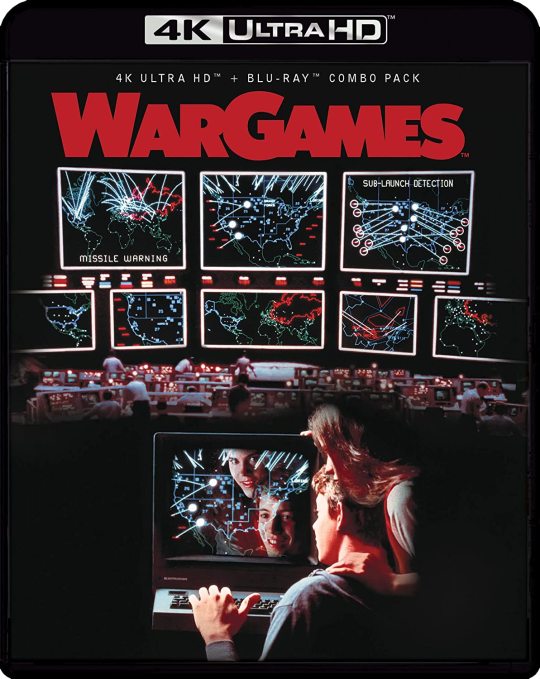
WarGames will be released on 4K Ultra HD + Blu-ray on December 20 via Shout Factory. The 1983 sci-fi action thriller is directed by John Badham (Saturday Night Fever, Dracula (1979)).
Matthew Broderick, Dabney Coleman, John Wood, and Ally Sheedy star. Lawrence Lasker & Walter F. Parkes (Sneakers) wrote the script, with uncredited work by Walon Green (Eraser, RoboCop 2).
WarGames has been newly restored in 4K from the original camera negative with Dolby Vision HDR. Read on for the special features.
Special features:
Audio commentary by director John Badham and writers Lawrence Lasker and Walter F. Parkes
Loading WarGames featurette
Inside NORAD: Cold War Fortress featurette
Attack of the Hackers featurette
Tic Tac Toe: A True Story featurette
Theatrical trailer
Computer hacker David Lightman (Matthew Broderick) can bypass the most advanced security systems, break the most intricate secret codes and master even the most difficult computer games. But when he unwittingly taps into the Defense Department's war computer, he initiates a confrontation of global proportions — World War III! Together with his girlfriend (Ally Sheedy) and a wizardly computer genius (John Wood), David must race against time to outwit his opponent... and prevent a nuclear Armageddon.
Pre-order WarGames.
#wargames#john badham#matthew broderick#ally sheedy#john wood#dabney coleman#shout factory#dvd#gift#80s movies#1980s movies#80s action movies#80s sci fi
222 notes
·
View notes
Text

Shortly after the terror attacks of October 7, the United States’ position initially appeared to be very clear. This was Israel’s war to fight and we would provide material and vocal support, but allow them to handle it as they saw fit. That lasted for about two weeks. By this past weekend, the situation had shifted noticeably, with threats of escalation showing up to the north of Israel from Hezbollah and rocket attacks on American posts in various places, including Iraq. And now both the Secretary of State and the Defense Secretary are clearly preparing the country for the possibility that the entire situation may blow up and our military is “ready” to go to war if we must. That’s a lot to soak in on a Monday morning, but a wider war may turn out to be inevitable unless Iran can be convinced to back down. (Associated Press)
Advertisement
Secretary of State Antony Blinken and Defense Secretary Lloyd Austin said Sunday that the United States expects the Israel-Hamas war to escalate through involvement by proxies of Iran, and they asserted that the Biden administration is prepared to respond if American personnel or armed forces become the target of any such hostilities.
“This is not what we want, not what we’re looking for. We don’t want escalation,” Blinken said. “We don’t want to see our forces or our personnel come under fire. But if that happens, we’re ready for it.”
Austin, echoing Blinken, said “what we’re seeing is a prospect of a significant escalation of attacks on our troops and our people throughout the region.”
I’m not going to criticize Blinken, Austin, or the Biden administration for facing reality and saying that we are “prepared” for war. It’s a crazy world, and we should always be prepared to go to war if we must. But we must also keep in mind the fact that war is and always must be the course of last resort. (Did we learn nothing from Iraq?) Diplomacy is always the preferred option if possible.
Sadly, diplomacy with Iran may not even be possible. They remain the world’s largest sponsor of terrorism and they are already at war with us, Israel, and the West in general. They just fight their wars in an unconventional fashion. If Hezbollah opens up a full attack on Israel from the north and attempts to move into Israeli territory, we will know immediately that it was Iran that equipped the terrorists and gave them the green light to go in.
Advertisement
In this regard, Joe Biden does bear a significant amount of the blame. It’s difficult to argue that we didn’t see this level of unrest and fighting in the Middle East during the Trump administration because we were cracking down on Iran, enforcing the sanctions on their oil exports, and taking out leading terrorist figures with missiles when they misbehaved. That all changed as soon as Joe Biden took office and began begging Iran to restart Obama’s disastrous nuclear deal. Iran has grown fat with cash under Biden’s watch, shipping massive volumes of oil to China and other destinations, all of which should have been blocked under the existing sanctions.
Biden’s timid and conciliatory approach to Iran was not rewarded with cooperation or better behavior. The Mullahs simply pocketed our cash and used it to ramp up the capabilities of Hamas and Hezbollah. And now they have launched a full-fledged war on Israel that threatens to embroil the entire region if not the world. (Russia has already been threatening Israel and China is now making similar noises and they have dispatched warships into the region. This could still go global.)
It didn’t have to be this way. These bad actors, particularly Iran, do not respect tokens of friendship or efforts to bargain. They only understand and respect strength. When America fails to lead with strength, our adversaries take note and have shown that they are willing to seize the opportunity, potentially to horrific effect. It may be too late to dial this back at this point, but unless Biden shows a significantly stiffer spine, the entire world may wind up changing significantly, leaving America’s days as a global power and thought leader in the dust.
youtube
Whatever Happened to "Give Peace a Chance"
26 notes
·
View notes